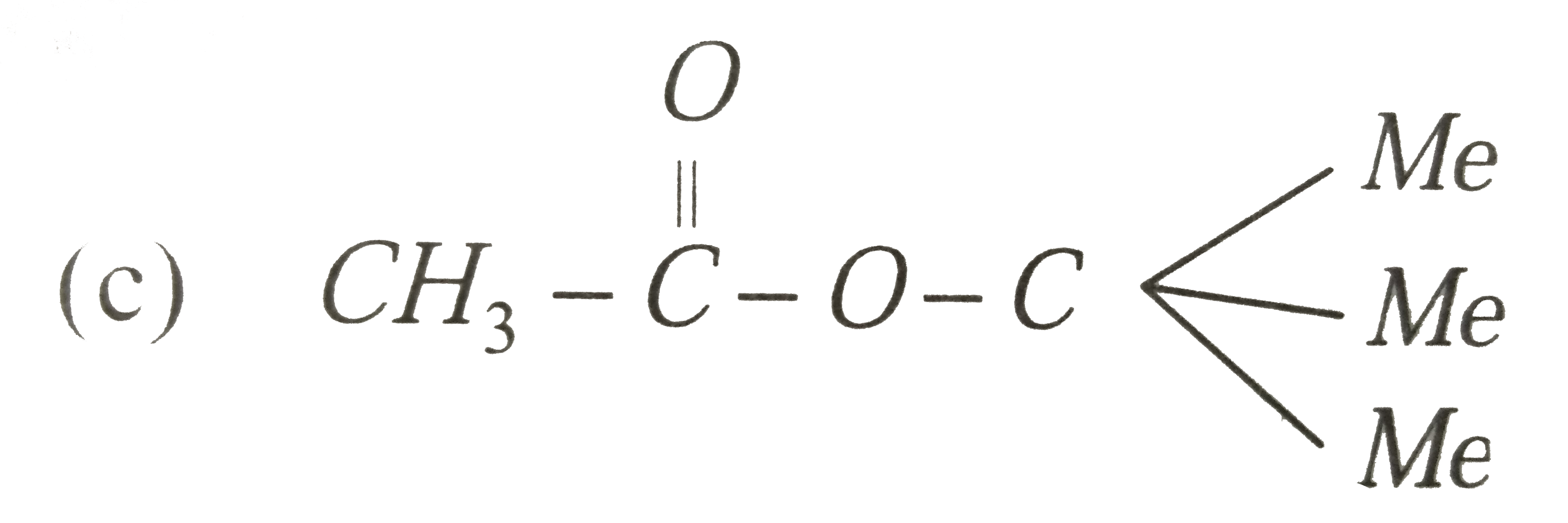Indicate the organic structure for the product expected when 2-methylpropene is heated with acetyl chloride in the presence of anhydrous ZnCl2.
CH3−C∣∣O−C∣CH3=CH2
CH3−C∣∣O−CH3∣C∣CH3−CH3
CH3−CH3∣C∣Cl−CH2−C∣∣O−CH3
CH3−H∣C∣CH3−CH2COCH3
The correct Answer is:C
To determine the organic structure of the product formed when 2-methylpropene is heated with acetyl chloride in the presence of anhydrous ZnCl₂, we can follow these steps:
1. Identify the Reactants:
- The reactants are 2-methylpropene (C₅H₁₀) and acetyl chloride (CH₃C(O)Cl).
- 2-methylpropene has the structure:
CH3|CH2=C|CH3
- Acetyl chloride can be represented as:
CH3|C=O|Cl
2. Understanding the Role of ZnCl₂:
- ZnCl₂ acts as a Lewis acid and helps in the activation of acetyl chloride by forming a more electrophilic species. The chlorine atom in acetyl chloride will leave, generating a positively charged acetyl cation (CH₃C⁺=O).
3. Formation of the Electrophile:
- When acetyl chloride reacts with ZnCl₂, the chlorine atom is displaced, resulting in the formation of the acetyl cation:
CH3∣C=O
4. Nucleophilic Attack by 2-Methylpropene:
- The double bond in 2-methylpropene acts as a nucleophile and attacks the electrophilic carbon of the acetyl cation. The reaction can be illustrated as follows:
CH3∣CH2=C+CH3C⁺=O→CH3C(OH)(CH3)C=O
5. Formation of the Carbocation:
- The attack leads to the formation of a carbocation. The positive charge will be on the more stable carbon, which is the one adjacent to the double bond:
CH3∣CH2−C⁺(O)CH3
6. Final Product Formation:
- The final product is formed when the chloride ion (Cl⁻) from ZnCl₂ attacks the carbocation, leading to the formation of the final product, which is 2-methyl-2-acetoxypropane:
CH3∣CH2−C(Cl)(O)CH3
Final Structure:
The final product can be represented as:
CH3∣CH2−C(Cl)(O)CH3
- The reactants are 2-methylpropene (C₅H₁₀) and acetyl chloride (CH₃C(O)Cl).
- 2-methylpropene has the structure:
CH3|CH2=C|CH3
- Acetyl chloride can be represented as:
CH3|C=O|Cl
- ZnCl₂ acts as a Lewis acid and helps in the activation of acetyl chloride by forming a more electrophilic species. The chlorine atom in acetyl chloride will leave, generating a positively charged acetyl cation (CH₃C⁺=O).
- When acetyl chloride reacts with ZnCl₂, the chlorine atom is displaced, resulting in the formation of the acetyl cation:
CH3∣C=O
- The double bond in 2-methylpropene acts as a nucleophile and attacks the electrophilic carbon of the acetyl cation. The reaction can be illustrated as follows:
CH3∣CH2=C+CH3C⁺=O→CH3C(OH)(CH3)C=O
- The attack leads to the formation of a carbocation. The positive charge will be on the more stable carbon, which is the one adjacent to the double bond:
CH3∣CH2−C⁺(O)CH3
- The final product is formed when the chloride ion (Cl⁻) from ZnCl₂ attacks the carbocation, leading to the formation of the final product, which is 2-methyl-2-acetoxypropane:
CH3∣CH2−C(Cl)(O)CH3
The final product can be represented as:
CH3∣CH2−C(Cl)(O)CH3
Topper's Solved these Questions
Similar Questions
Knowledge Check
- Question 1 - Select One
Indicate the organic structure for product expected when 2-methylpropene is heated with acetyl chloride in the presence of anhydrous ZnCl2
ACH3−C||O−C∣CH3=CH2BCH3−C||O−CH3∣C∣CH3−CH3CCH3−CH3∣C∣Cl−CH2COCH3DCH3−H∣C∣CH3−CH2COCH3 - Question 2 - Select One
Indicate the organic structure for product expected when 2-methyl propene is heated with acetyl chloride in presence of anhydrous ZnCl2
A(CH3)2CCl−CH2−COCH3B(CH3)2CH−CH2CO−CH3CCH3−C∣∣O−OC(CH3)3DCH3−C∣∣O−C∣CH3=CH2 - Question 3 - Select One
Indicate the organic structure for the product expected when 2-methylpropene is heated with acetyl chloride in the presence of anhydrous ZnCl2.
ACH3−CH3∣C∣Cl−CH2−CO−CH3BCH3−H∣C∣CH3−CH2−CO−CH3C DCH3−O∣∣C−CH3∣C=CH2
DCH3−O∣∣C−CH3∣C=CH2
Predict product formed when benzene is treated with iodine chloride in presence of anhydrous aluminium chloride.
View SolutionEther on heating with acetyl chloride in presence of anhydrous ZnCl2gives :
View SolutionNitrobenzene reacts with acetyl chloride in the presence of anhydrous AlCl3 to from
View SolutionEthylene glycol when heated in the presence of an hydrous ZnCl2 yields
View SolutionName the product formed when aniline reacts with carbonyl chloride in the presence of pyridine.
View Solution

